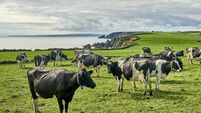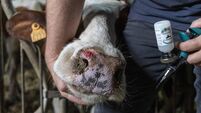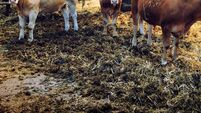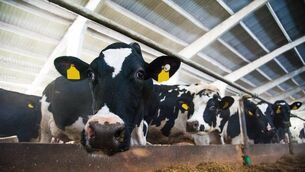High food prices in Ireland — farmers are not the culprits
The bad news?
We were still 18% above the European average in recently-published EU data on consumer prices in all 27 member states (and in a few other European countries also). Data are published for goods and services which account for nearly two thirds of household expenditure. In this broad category, prices in Ireland were 17% above the EU-27 average in 2011.
We were behind Denmark, Sweden, Finland and Luxembourg, in fifth place.
A host of countries, such as Belgium, France, Netherlands, Germany, Italy and the UK were between 3 and 11% higher than the average — while the new member states in eastern Europe and the Mediterranean countries had lower than average prices.
What about food prices? Here, the story is similar, we are 18% above the European average. We are in a group which includes Sweden, Finland Luxembourg, Belgium and Austria, all between 15% and 20% above the average.
In France and Germany and Cyprus, prices are 8% to 10% above the average, while Britain remains at 3% above average, clearly, significantly cheaper than Ireland.
Again, Eastern and Mediterranean countries have food prices below the European average.
Surprisingly, the Netherlands is at only 95% of the average, while its close neighbour, Belgium, is at 115% of the average.
But these indices reflect after tax prices, so the position of Irish consumers is actually worse, comparatively. That’s because consumers here (and in Britain) do not pay VAT on food.
Consumers in all other member states pay VAT on food, as well as on other goods.
The VAT rates for food start at 4% in Spain and Italy, at 5.5% in France, at 6% in Netherlands and Belgium, and at 7% in Germany.
In Denmark, there is one rate of VAT for everything — a whopping 25%.
Most of the new member states in Eastern Europe also have rates over 20%.
The apparent discrepancy between Irish prices and others clearly needs some explanation.
See the table above on the Household Budget Survey data on prices paid for some foodstuffs in Ireland and in Netherlands.
Clearly, Dutch consumer prices for many food products are much lower than in Ireland, even after they have paid VAT.
Sugar is nearly 70% dearer, orange juice 38%, and low-fat milk is over 50% dearer.
Only two items on the list, bananas and potatoes, are cheaper in Ireland.
Are our prices high for everything?
No. For clothing, footwear, furniture and soft furnishings, Irish prices are only 92%, 77% and 98% of the EU average, respectively.
Likewise, consumer electronics and household appliances are cheaper than average.
We are dearer than average in some other areas, such as transport and restaurants and hotels, and are dearest of all for alcoholic drinks, because of the high taxes we impose on them.
Is the situation regarding food prices getting worse or better?
The answer is clear.
Two years earlier, in 2009, Irish prices in general were 25% above the European average, food prices were 28% above average (compared to 18% in 2011).
Consumer prices for food have risen in Ireland by only 3% since 2005, while the EU average increase is 22.5%. The countries with high increases in food prices are those “new” EU member states such as Hungary (up 64% since 2005), Latvia (up 62%), Lithuania (up 55%), Bulgaria (up 51%) and Estonia up 46%.
But food prices have increased over the same period in France, Netherlands and Germany by 15 to 17%, and in the UK by a whopping 38%. The rate of increase in food prices in Ireland since 2005 is the lowest of all member states.
Are all our food prices high?
Bread and cereals in 2011 were 22% above the EU average; meat was 8% above; dairy products 28%; oils and fats 1%; fruit, vegetables and potatoes 29%; and “other food products ” 14% dearer than average.
In that year, Dutch prices for all categories were below the European average, except for meat (113%) and fruit and vegetables (103%).
So much for the hard data. Now the hard questions.
Why is food in Ireland relatively more expensive than in other “mature” member states?
Why have the prices been so stable in recent years, while prices elsewhere climbed. And why is food so cheap in Holland?
The first place to look for an explanation is in prices paid to farmers.
Are these higher in Ireland than in other member states? In 2011, Irish milk prices received by farmers were higher than in 10 other member states, mostly in eastern Europe, but including the UK and Spain, but lower than in nine other old member states. Irish farmer prices for raw milk were 21% below those received by Dutch farmers in 2011.
This gap has varied between 11% (in 2007) and 24% (in 2009) over the past nine years.
So the price of raw milk does not account for the higher cost of dairy products for Irish consumers.
A detailed study by Alan Collins and colleagues in UCC showed that the share of the retail price received by farmers for dairy products, beef and lamb, declined in the ten years up to 2005, while that of retailers increased, particularly for dairy products.













